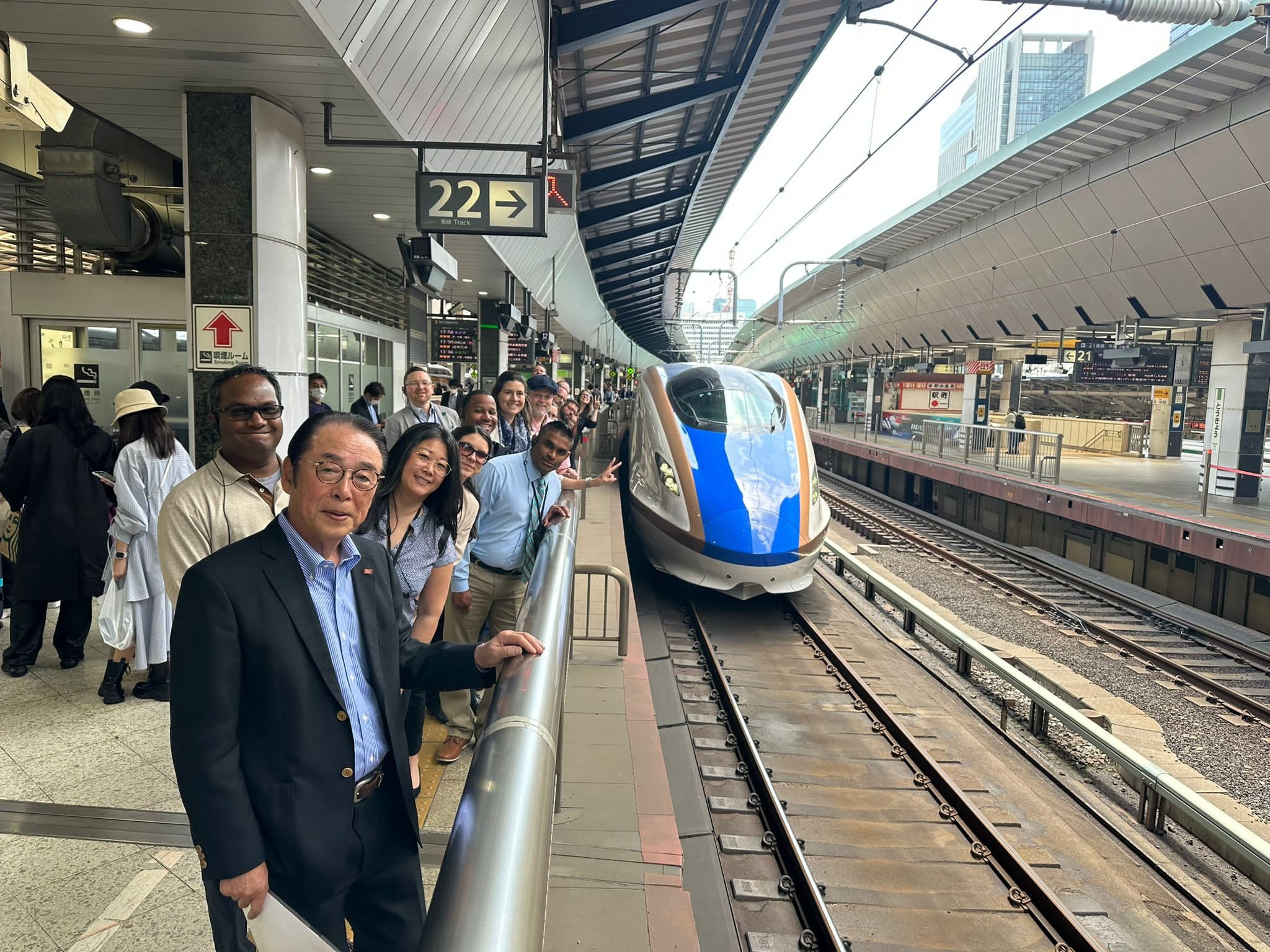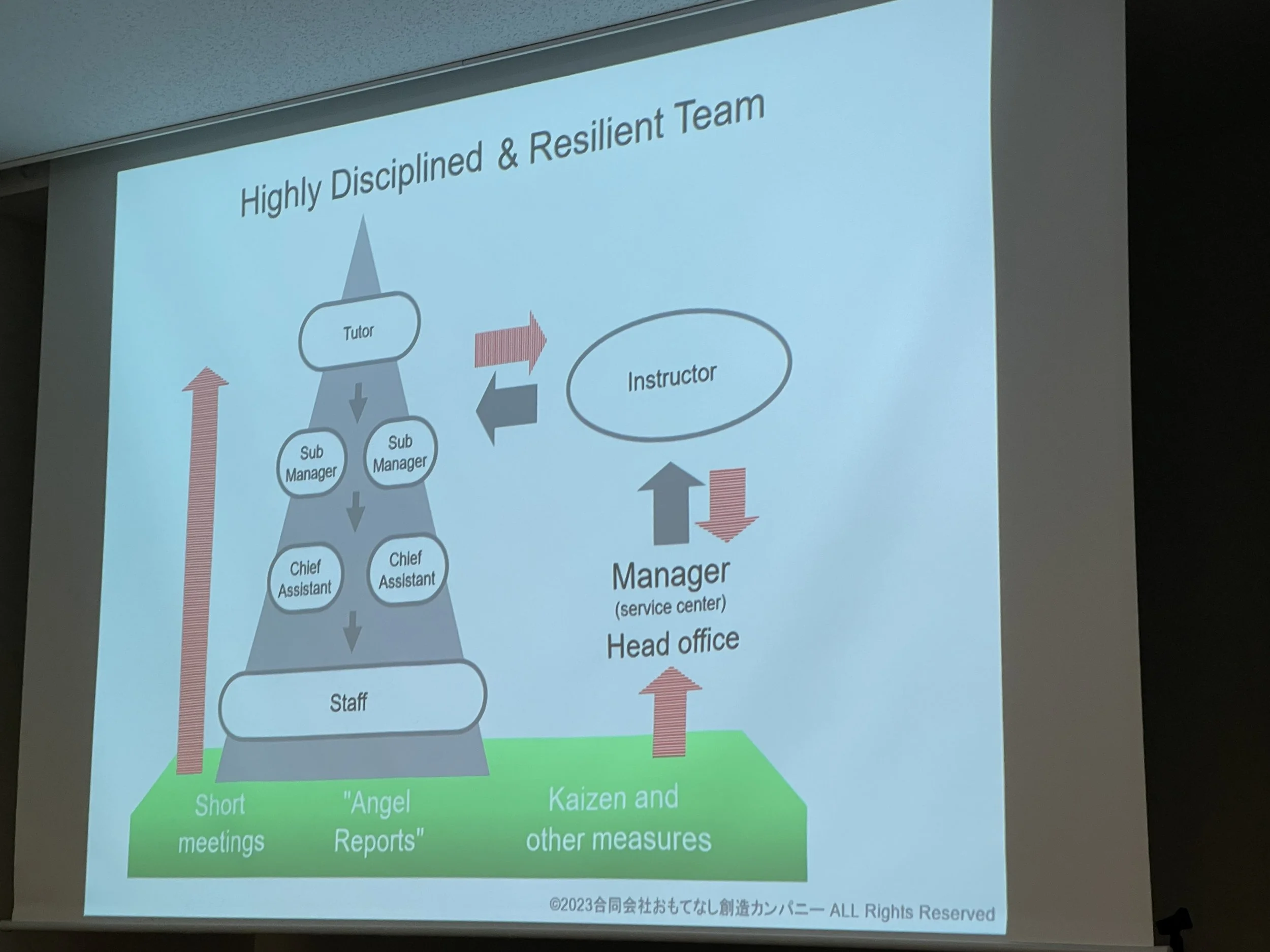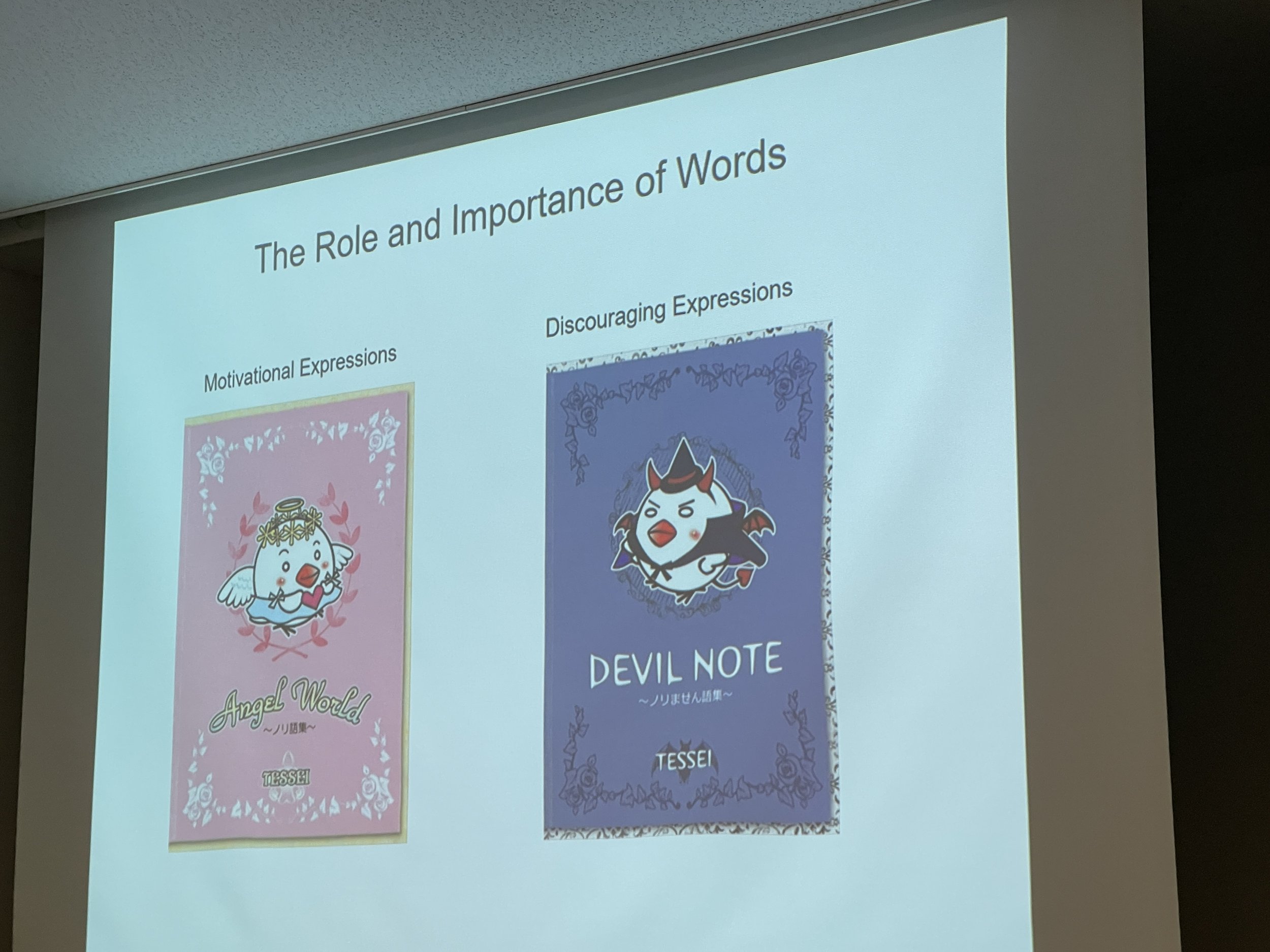Day Five - Katie Anderson's Japan Study Trip
It was the last day of our study trip today. While "Gemba" was another key theme of all the companies we met this week, my favorite Genchi Genbutsu ("meaning "the situation onsite") was with Tessei today. Genba (onsite, romanized as Gemba) means "the actual place." Tessei cleans bullet trains as they arrive at the line's final stop at Tokyo station. Harvard Business School students studied the "Seven-Minute Miracle" cleaning method. The Shinkansen bullet train is a marvel of engineering and operation. JR East, which runs trains at 320 kilometers per hour, demonstrates an unparalleled commitment to schedules. A train is considered on time if it arrives within fifteen seconds of its scheduled time, with most trains arriving within six seconds of their scheduled time.
At Tokyo station, each train has a 12-minute turnaround time. Within five minutes, the current passengers are replaced with new ones, leaving seven minutes for cleaning. Twenty-two people cleaned 1,000 seats, tray tables, and headrest covers during those seven minutes and turned seats to face the new direction. Additionally, they clean the floors, windows, and bathrooms, empty wastebaskets, and collect forgotten items. They adjust the blinds and make sure everything is neat - all in just seven minutes!
JR-East engaged Teruo Yabe in 2005 to revive Tessei, a 669-person subsidiary responsible for cleaning Shinkansen ("bullet") trains. As a former executive at JR East, Yabe specialized in safety. His ideas on resilience engineering and psychological safety that he had successfully practiced for Shinkansen's safety were applied to the cleaning company. Yabe gave us a presentation about Tessie in the morning. Based on his presentation, he said he wanted to see if his safety ideas would work for a cleaning company. A good management strategy benefits every industry, according to Dr. Deming. Yabe's ideas worked at Tessie.
Things couldn't have been worse for Tessei or their cleaning crews in 2005. Recruiting and retaining employees was difficult because the job was considered dirty, dangerous, and dead-end. There was a low level of morale. The performance could not have been worse. There were frequent delays. Tessei management responded to these issues as most managers did before Yabe. An increase in checks and inspections was made, as well as an increase in supervision. As a result, morale dropped even further. Accidents increased, and customer complaints also increased due to the delays. When Yabe took over Tessei, things began to change under his leadership.
Cleaners About to Begin the 7 Minute Miracle
His first action was to "eliminate the smell," physically and metaphorically. To deliver clean trains, he had to change the workers' mindset from dirty work to pride. To the workers, he explained that JR East was a world-class railroad and that the Tessei workers were part of it. Andrew Clay Shafer tells the story of the three brick workers. The first worker says he lays bricks when asked what he does. A second worker replies, "I build columns." The third worker responds, "I build cathedrals." Yabe wanted the workers to realize they were part of a bigger system. The workers' view of their jobs changed due to Yabe's influence. Yabe showed us a video of a worker who said, at first, she was embarrassed to admit to her family that she cleaned trains. However, she was most proud when her grandson told her he was proud of her after watching her on CNN's Tokyo's Seven Minute Miracle. Yabe admitted to us that he also worked with the media to change both the internal and external perceptions of Tessie. CNN, Business Insider, Japan News, and Mainichi, to name a few.
Yabe asks a worker about the job.
In the past, the cleaning crews were supposed to be almost invisible. Passengers expected this quick cleaning to happen almost magically. This idea was turned on its head by Yabe. With the name "Shinkansen Theater," he began a program. In seven minutes, the cleaners accomplish all of this with efficiency and grace that seems more like performing than doing their job. At the end of the job, usually with time to spare, the team assembles on the platform at the front of the train and bows in unison to the passengers.
To ensure the cleaners stood out, Yabe changed their uniforms from blending into the trains' interiors to bright red. Passengers could see the cleaners and what they were doing, which was the first step to appreciating their work. During the summer, they wear Haiwian shirts and sometimes dress up for holidays. An employee came up with the idea for the Shinkansen Theater. Workers like to say passengers are the actors, and they are the stage production, according to Yabe. Every company we visited this week created a culture of recognition where employees were encouraged to develop small kaizens.
When you understand why you're waiting for boarding, it's much less irritating, and cleaning 1,000 seats in seven minutes is pretty impressive. Yabe also made other changes. He allowed the cleaners to speak with passengers, which had previously been prohibited. Allowing this communication didn't distract the cleaners; it increased passenger appreciation for their work. Things started to change after a while. Shinkansen passengers began picking up after themselves once they realized what a great job the cleaners were doing, and the amount of trash left behind for them to clean decreased. In addition, Yabe changed the culture in a significant way. Employees were encouraged to tell their managers about the excellent work of their coworkers. Efficiencies improved. The cost of training decreased. There was a dramatic increase in employee morale and retention.
Throughout his presentation, Yabe gave numerous examples of how he made Tessei a learning organization. The teams have instructors, tutors, sub-managers, and chief assistants. The model is collaborative, not tayloristic. Before Yabe took over, 50k items were lost and not retrieved in a year. They made a simple Kaizen improvement to help find the lost items. If a cleaner finds a missing item, they put a bell on the bag. Through this method, they would be reminded that they had found the item, and in many cases, the person who lost the item found the article due to the bell's "signal." Japanese culture and signals could fill a whole book. JR East received another kaizen suggestion from a Tessei worker. The same was also the case in all the companies we visited this week. Kaizen is not just about one team, organization, or company. A worker suggested that JR East add hand sensors for flushing toilets; previously, Tessie had to clean an additional 300k unflushed toilets annually. Yabe said employee satisfaction creates customer satisfaction. Tessei employees wrote two handbooks because they were so engaged. Angle World and Devil Note are two books. Sharing and caring are the cornerstones of Angel World. The Devil Note, on the other hand, is a list of words that Tessei workers should never use.
Seven-minute miracle became a reality in Japan within a few years. There are even times when passengers clap. Tessei, Yabe, and the cleaning crews have received well-deserved international recognition. A Harvard Business School case study documents and understands this incredible turnaround, attracting rail operators worldwide.
My biggest takeaway this week was a deeper understanding of Gemba. This week, I heard a quote that said the Gemba is where we make money. In one case, it was described as an apology to a customer. In another other case, a boss asks an employee about their weekend. In many cases, it was the cafeteria where most companies visualized their kaizen and hosin kanri boards. In most Lean books and lectures, the Gemba is typically described as a place you visit. Most companies we saw this week explained it as more of a concept -- interaction for understanding, learning, and having fun.




